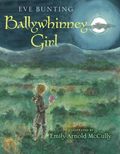



|
It's St. Patrick's Day this weekend, but do you know who St. Patrick was and how the traditions of the holiday started?  My favorite way to celebrate the holiday is to read Irish folktales. Brave Margaret is one of my favorites. It takes the damsel in distress theme so common in folktales and turns it on its head. Not content to wait at home, Margaret fights a monster to save her love. Another great way to celebrate the holiday is to listen to some Irish music like the traditional music below.  Ireland has a rich history, dating back to ancient times. This can be seen in the hauntingly preserved bog bodies that can be found in its peat bogs. Eve Bunting's new picture book, The Ballywhinney Girl, tells the story of a little girl and her grandfather who find a bog body in their own backyard.  Siobhan Dowd explores similar themes in Bog Child for a teenage audience. This book, set during The Troubles, tells the story of a boy who discovers a body in a peat bog and an archaeologist who comes to investigate it. It looks at Irish history from multiple perspectives to create an engaging story.  For those who want to learn more about bog bodies and other types of mummies, we have several nonfiction books on the subject. You can also find a lot of information online. National Geographic has an article on two bog bodies found in Ireland in 2003. Archaeology.org has many articles on bog bodies for those interested including one on the poetry to be found in them. It highlights the poems of Seamus Heaney, an Irish Nobel Laureate who has written poems on the subject including "The Tollund Man," "Bogland," and "The Grauballe Man."  50 enthralling and effective writing lessons age 5 to 12 including one by our own former reading teacher Meg Adler on "Creating a Guide to Modern Girlhood." The entry on Magic Realism suggests "What if sneezes brought good luck? What if you wrote about it?" Picture book writer Jon Scieszka imparts how he gets his ideas. Science teachers don't miss the link to Daniel Radcliffe of Harry Potter fame singing the Periodic Table in chapter 37. Don't Forget to Write by 826 National, editor Jennifer Traig.  This little jewel of a book will interest naturalists and teachers of poetry alike. Animal poems arranged by habitat delight the eye and ear. The second half of the book explores the different poetic forms used for each animal. For example the hawk entry uses a form called a triolet because "it combines rhymes and repeated lines in a pattern that nicely matches the movement of a circling hawk." Nest, Nook & Cranny poems by Susan Blackaby  How to Tell a Folktale by Carol Alexander is an amazing "how-to" for writing different types of folk tales including tall tales, trickster tales, pourquoi tales and more. This a very practical book with step by step instruction and wonderful examples covering such elements as dialogue and dialect, setting, plot, theme, and creative responses. If your curriculum covers writing fables, myths or legends, let me know. I will be ordering those titles in this useful series.  Oh those pesky homophones! Do you know there are college students who misuse these three words? They should have read They're There in Their Boat by Mary Salzmann. These three titles by Ann Heinrichs demystify the mechanics of grammar and its usage in a lively and humorous manner.
|
Categories
All
Archives
May 2024
|